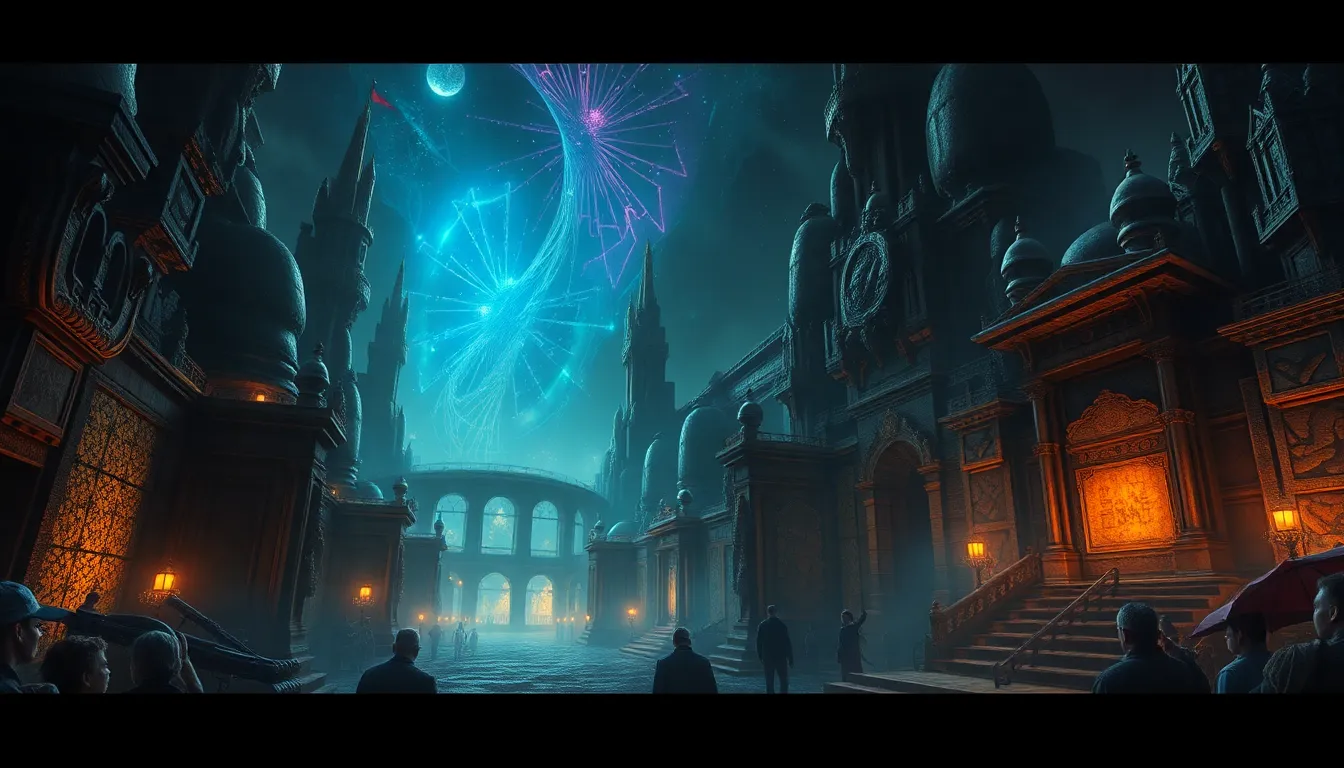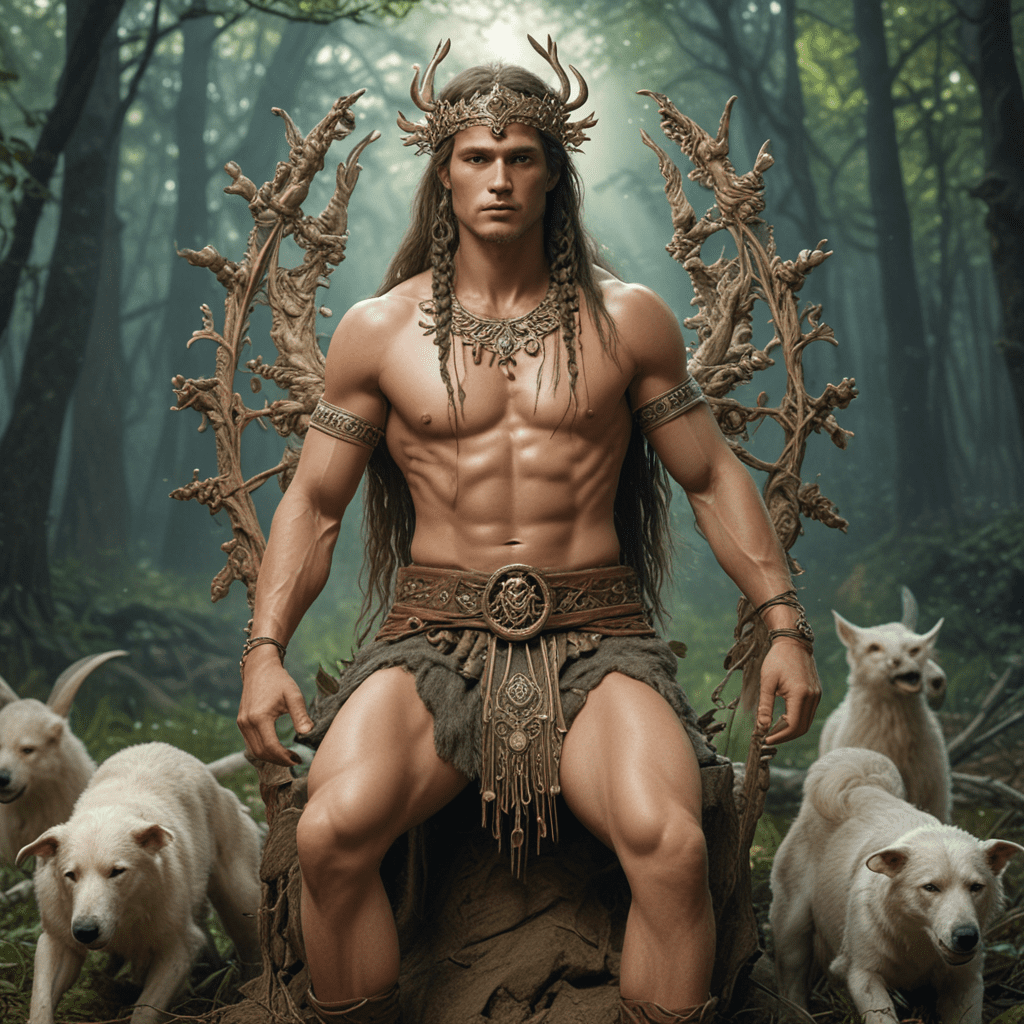Fafnir and the Quest for Redemption: The Dragon’s Search for Meaning
I. Introduction
Fafnir is a prominent character in Norse mythology, often depicted as a fearsome dragon guarding a treasure hoard. His transformation from a man into a dragon is steeped in themes of greed and the consequences of desire. This article explores Fafnir’s complex journey, focusing on his quest for redemption and the search for meaning that resonates deeply through literary narratives.
Redemption serves as a significant theme in many stories, symbolizing the possibility of change and the hope for a better future. Fafnir’s tale is not just about a dragon; it is a profound exploration of internal conflict, the nature of greed, and the journey toward self-discovery. In this article, we will delve into Fafnir’s character, his origins, and the implications of his transformation, as well as the broader mythological context that shapes his narrative.
II. The Origins of Fafnir: From Man to Dragon
Fafnir was originally a human, the son of the dwarf king Hreidmar. He had two brothers, Ótr and Regin, with whom he shared a complicated relationship. The catalyst for Fafnir’s transformation into a dragon was the curse associated with the gold he and his family hoarded, particularly after the slaying of Ótr by the god Loki.
The transformation into a dragon symbolizes the overwhelming power of greed. As Fafnir succumbed to his desire for wealth, he became increasingly isolated and consumed by his obsession. This change reflects a broader theme present in mythology: the corrupting influence of greed and the loss of humanity that can accompany the pursuit of material wealth.
- Background as a human: Fafnir’s initial life was marked by familial bonds and loyalty.
- Transformation into a dragon: Driven by greed, he became a solitary creature, embodying the very essence of avarice.
- The curse of greed: His fate serves as a cautionary tale about the dangers of unchecked desire.
III. The Mythological Context of Fafnir
Fafnir holds a significant place in Norse mythology, particularly in the tale of the Volsungs, where his story intersects with that of the hero Sigurd. The myths surrounding Fafnir are rich with symbolism and themes that reflect the values and beliefs of the culture from which they emerged.
Key figures in Fafnir’s story include his brothers, Regin and Ótr, and Sigurd, who ultimately confronts Fafnir. Each character adds depth to the narrative, highlighting the complexity of familial relationships and the tragic consequences of betrayal.
Dragons in various cultures often symbolize chaos, greed, and power. In Norse mythology, Fafnir represents not only a physical threat to heroes like Sigurd but also the moral and psychological challenges that come with greed and ambition.
IV. The Quest for Meaning: Fafnir’s Internal Struggle
Fafnir’s transformation into a dragon leads to profound isolation. As he guards his treasure, he becomes increasingly aware of his loneliness and the emptiness of his existence. This internal struggle is a crucial aspect of his character development.
Greed and desire play pivotal roles in Fafnir’s transformation. Initially driven by a desire for wealth and power, he becomes trapped in a cycle of consumption that ultimately leads to his downfall. Throughout the story, there are moments of reflection where Fafnir questions the choices that have led him to become a monster.
- Isolation: Fafnir’s solitude becomes a source of torment, driving him further into despair.
- Greed and desire: His obsession with wealth blinds him to the joy of human connection.
- Moments of reflection: These instances provide insight into his internal conflict and the realization of his tragic fate.
V. Encounters on the Path to Redemption
The encounter with Sigurd serves as a catalyst for Fafnir’s potential redemption. Sigurd, a hero destined to slay the dragon, represents a force of change in Fafnir’s life. Their confrontation is not merely a battle; it is a pivotal moment that forces Fafnir to confront the consequences of his choices.
Prophecy and fate play significant roles in Fafnir’s journey. The Norse belief in fate, or wyrd, suggests that Fafnir’s path was predetermined, yet the choices he made led him to this inevitable confrontation. In this context, Fafnir’s lessons learned through conflict become paramount.
- Meeting with Sigurd: This encounter challenges Fafnir to confront his past and the greed that transformed him.
- Impact of prophecy: The narrative suggests that Fafnir’s fate was set, yet he still had agency in his choices.
- Lessons learned: Through conflict, Fafnir is forced to confront the true cost of his desires.
VI. The Symbolism of Redemption in Fafnir’s Story
Redemption, as it pertains to Fafnir, is complex. For him, redemption may not come in the traditional sense of salvation but rather through recognition of his flaws and acceptance of his fate. The nature of redemption in mythology often involves sacrifice and atonement, themes that resonate deeply in Fafnir’s story.
Throughout the myths, sacrifice plays a critical role in achieving redemption. Fafnir’s ultimate fate—being slain by Sigurd—can be viewed as a form of atonement, a necessary end to the cycle of greed and isolation.
Fafnir’s journey parallels those of other mythological figures who grapple with their flaws and seek redemption, highlighting the universal struggle against inner demons and the hope for transformation.
VII. Fafnir’s Legacy: Influence on Modern Interpretations
Fafnir’s story continues to influence contemporary literature and media, showcasing the enduring themes of redemption and transformation. Many modern interpretations reimagine Fafnir not just as a dragon but as a complex character wrestling with his identity and choices.
The themes of redemption and the consequences of greed resonate with modern audiences, providing a timeless reflection on the human condition. Fafnir serves as a reminder of the dangers of allowing desire to dictate one’s actions, making his story relevant even in today’s world.
- Contemporary literature: Fafnir appears in various adaptations, often symbolizing the struggle against one’s darker impulses.
- Enduring themes: The lessons learned from Fafnir’s journey continue to resonate with audiences, emphasizing personal growth.
- Modern resonance: Fafnir’s tale invites reflection on greed and the search for meaning in a materialistic world.
VIII. Conclusion
Fafnir’s quest for meaning and redemption is a rich narrative that explores the complexities of human desire and the consequences of greed. His journey serves as a cautionary tale, urging us to reflect on our choices and their impact on our lives.
Understanding myths like that of Fafnir is crucial for recognizing the potential for personal growth and transformation. As we engage with these stories, we find parallels in our own lives, encouraging us to seek redemption and meaning in a world often overshadowed by material desires.
In conclusion, Fafnir’s journey remains relevant today, reminding us of the timeless struggle against greed and the importance of seeking redemption in our own lives.




